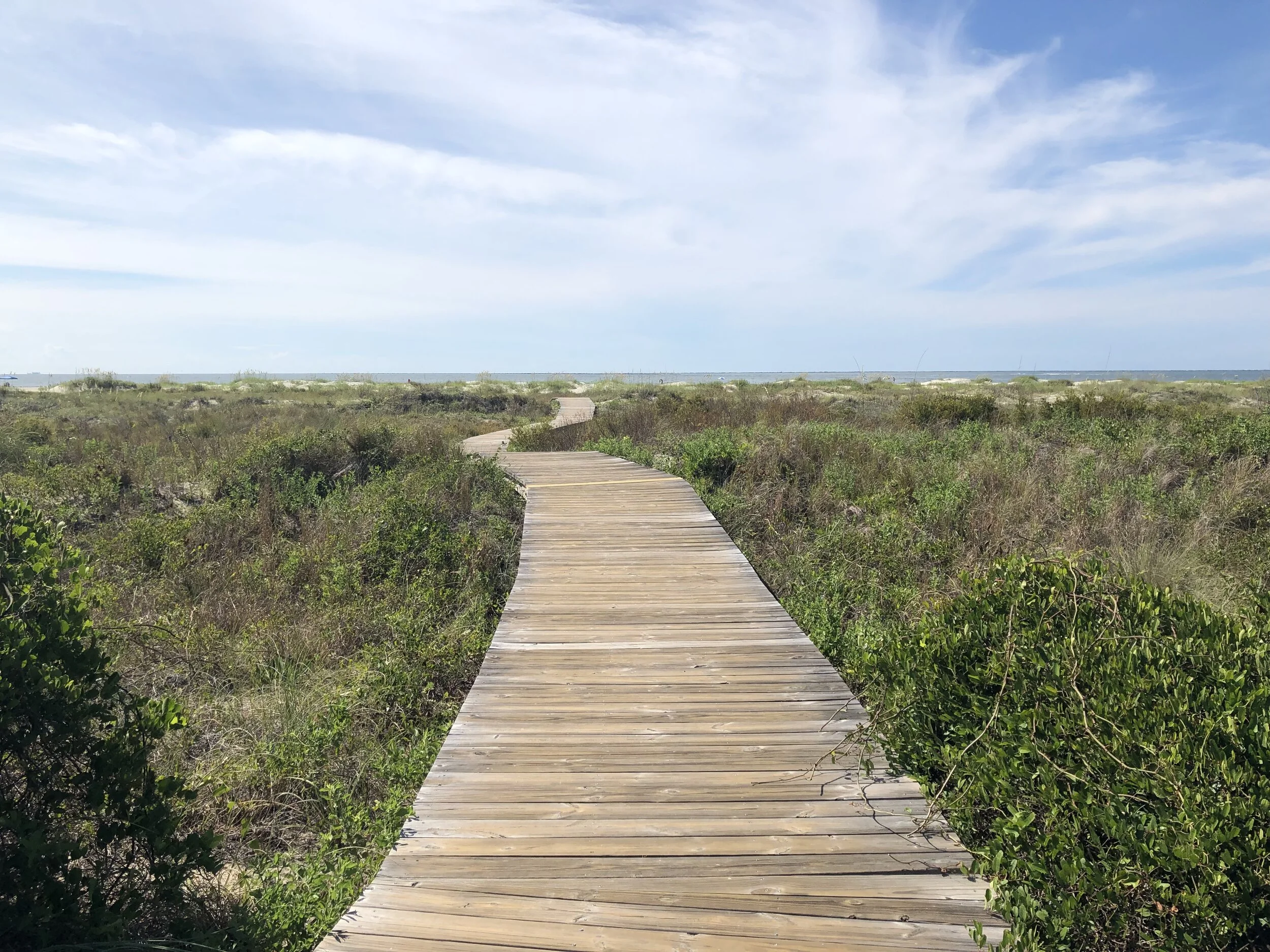A history hiding in plain sight
Sullivan’s Island, South Carolina, July 2019.
The first time I went to Charleston, South Carolina, I was angry.
Despite Charleston’s notorious role as the busiest American port in the slave trade, I saw no evidence of its dark past as I strolled the cobblestone streets.
There’s a building dedicated to the Daughters of the Confederacy. There’s a major street named after John C. Calhoun, who defended slavery to the last and put up roadblocks to any initiatives to curtail it. There’s also a towering statue of him, right downtown.
Where did this city acknowledge the experience of those who passed through here on their way to lives of unimaginable pain and suffering?
Frustrated and confused, I headed to the Old Slave Mart Museum.
There, an African-American woman with long braids greeted me and gently informed me that we were standing in a room where human beings had been bought and sold.
Struck by the magnitude of this fact, I was overcome with emotion. This really happened. I asked where I could learn more about the African-American history of Charleston.
“Everything you saw as you walked around is their history,” the docent said.
The light went on. “Because they built it,” I said softly.
She nodded. “Their fingerprints are on every brick of every building. They are buried in the streets beneath the cobblestones they laid.”
She showed me pictures of bricks with fingerprints clearly visible, including the fingerprints of children.
The next morning, I went to Sullivan’s Island, which is where the slave ships landed and quarantined their human cargo in “pest houses” before preparing them for market in Charleston. It has been called “the African-American Ellis Island.” At least 40% of African-Americans can trace their ancestry to someone who entered the country here.
First, following the docent’s directions, I found the African-American cemetery and paid my respects there. Then, I headed to the Toni Morrison Society’s “Bench By the Road,” which is essentially a monument that exists to make the point that otherwise, there would be no monument. Standing there, in a place that no signs point to, all you hear is the wind in the trees, the birds and insects chirping and buzzing, and the roar of the surf. It’s the perfect place to grieve.
How to reconcile the magnitude of slavery and its legacy with the tiny spaces dedicated to remembering it?
In trying to teach history to children (or anyone), we owe it to them to find the truth. The stories of what really happened.
Schools often provide the illusion that there is a checklist that they are following — that students must follow — in order to be educated citizens. But some of the most important stories are not even in the textbooks.
I was blind to these stories as I wandered around the city of Charleston. I couldn’t see what was right in front of me until it was pointed out. And if I hadn’t sought it, I would have missed it.
So it is with so many aspects of African-American history — which is to say, American history. The markers and plaques are missing, or they might distort the facts. What I think I know is incomplete and subject to my limited experience unless I go looking for more.
Of course, the more I learn, the more I know that I don’t know. Returning to Atlanta after my trip to Charleston, I had to acknowledge that my own city, the birthplace and resting place of Martin Luther King, Jr., has a major hospital and high school named after white supremacist Henry Grady (and yes, there’s a statue), its own former slave market, a troubled history of race relations, the most significant income inequality of any major American city, and police violence against African-American people. Despite my college education and nearly two decades in the city, these aspects were invisible to me.
As an educator, business owner, and white woman, I feel a responsibility to lead by pursuing truth. I accept that this is a never-ending process. And when it comes to areas that are far from my experience — like understanding the reality of being black in America — I am still at the beginning.
Teachers don’t have all the answers — on the contrary, we are always learning. Education does not consist of a list of concepts and knowledge areas to be “covered.” In fact, such an idea lures teachers, parents, and students into a false sense of completion. Our education is never complete, and that is what we need to learn most of all.
It’s a valuable lesson in itself for us to understand that we don’t know everything — not even everything important. And we never will. That’s the beauty and the danger. We might not see it, but that doesn’t mean it isn’t there.
#blacklivesmatter






